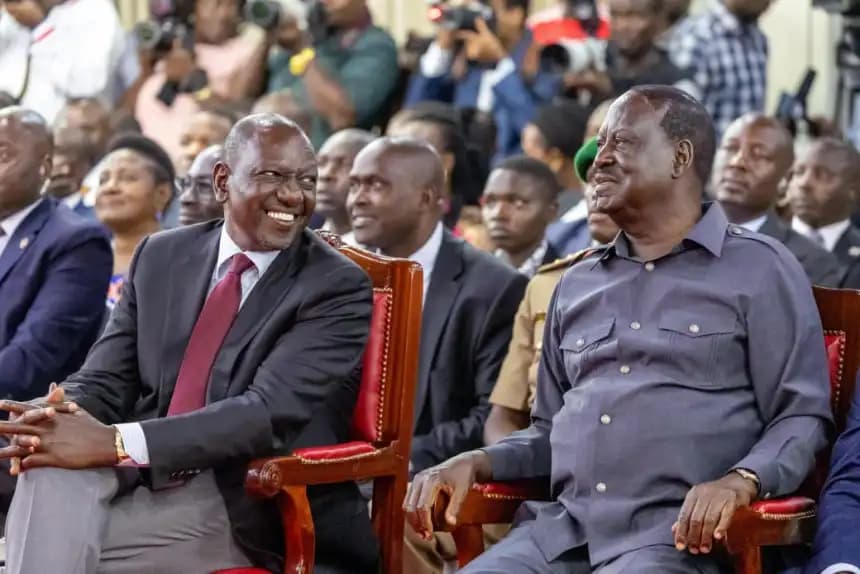Loading News Article...
We're loading the full news article for you. This includes the article content, images, author information, and related articles.
We're loading the full news article for you. This includes the article content, images, author information, and related articles.
Allied leaders from President William Ruto’s party in the North Rift want a constitutional referendum held together with the 2027 elections to address long-standing issues in the 2010 Constitution.

Kapsabet, Kenya — A faction of United Democratic Alliance (UDA) leaders from the North Rift region has revived debate over constitutional reform, urging that a referendum be held alongside the 2027 General Election. The leaders argue that after 15 years under the 2010 Constitution, Kenya must confront structural weaknesses that continue to frustrate governance and development.
During a church service in Kapsabet, Nandi Hills MP Bernard Kitur pressed for immediate action. “Let us start the process of changing the Constitution as soon as now. If there are bad issues, let us start working on them right away,” Kitur said. He suggested consolidating proposed amendments into one referendum question, to cut costs and ensure maximum turnout by merging the exercise with the general election.
Nandi Governor Stephen Sang echoed the push, saying that a decade and a half of experience with the current framework provides a solid basis for review. “We must evaluate what has worked and what has not. The law should help us move forward, not hold us back,” he argued.
The leaders identified several constitutional challenges:
National Government Constituency Development Fund (NG-CDF): The fund has been repeatedly challenged in court, creating uncertainty for MPs and communities that rely on it for local development.
Two-Thirds Gender Rule: Despite being entrenched in the 2010 Constitution, Parliament has failed to implement the requirement for fair gender representation, triggering multiple legal and political standoffs.
Governance Flexibility: Some provisions, they argue, have created rigidities that limit effective service delivery and national cohesion.
The North Rift calls align with broader national discussions. Opposition leader Raila Odinga has separately suggested a review of devolution structures, including the distribution of resources and powers among the 47 counties. His proposals, alongside those of UDA-aligned leaders, signal that the 2027 election season could double as a referendum campaign on Kenya’s constitutional future.
Kenya’s journey with constitutional reform has been marked by contentious national debates:
2005 Bomas Draft & Referendum: The government-backed draft constitution was rejected in a national vote, reflecting deep divisions over executive power and devolution.
2010 Constitution: After years of negotiations, Kenya adopted a new charter designed to curb executive overreach, expand rights, and entrench devolution. It remains the most significant legal milestone since independence.
2018–2021 Building Bridges Initiative (BBI): Born out of the post-2017 election “handshake” between President Uhuru Kenyatta and Raila Odinga, BBI proposed sweeping reforms, including an expanded executive. The initiative collapsed in 2021 after the Supreme Court declared it unconstitutional.
These episodes illustrate both the appetite for reform and the risks of politically driven processes that polarize rather than unite.
If the North Rift proposal advances, Kenyans could face a dual ballot in 2027: one to elect leaders and another to decide on constitutional amendments. Proponents frame this as cost-effective and efficient, while critics caution that mixing electoral politics with constitutional change could cloud sober debate.
The push signals that the question of constitutional reform is far from settled. With both ruling-party and opposition figures raising the issue, Kenya may once again find itself at a familiar crossroads — weighing the promises and perils of rewriting the nation’s supreme law.
Keep the conversation in one place—threads here stay linked to the story and in the forums.
Other hot threads
E-sports and Gaming Community in Kenya
Active 6 months ago
Popular Recreational Activities Across Counties
Active 6 months ago
Investing in Youth Sports Development Programs
Active 6 months ago
The Role of Technology in Modern Agriculture (AgriTech)
Active 6 months ago